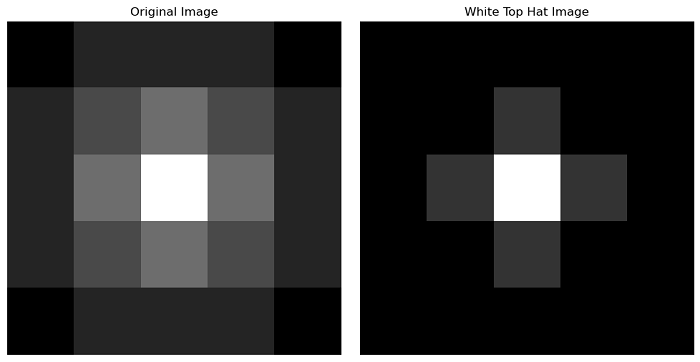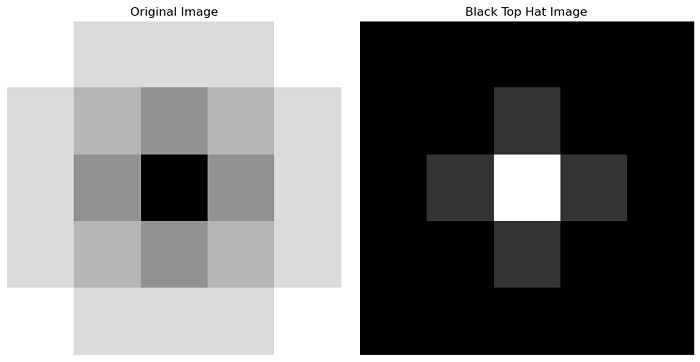
- Scikit Image – Introduction
- Scikit Image - Image Processing
- Scikit Image - Numpy Images
- Scikit Image - Image datatypes
- Scikit Image - Using Plugins
- Scikit Image - Image Handlings
- Scikit Image - Reading Images
- Scikit Image - Writing Images
- Scikit Image - Displaying Images
- Scikit Image - Image Collections
- Scikit Image - Image Stack
- Scikit Image - Multi Image
- Scikit Image - Data Visualization
- Scikit Image - Using Matplotlib
- Scikit Image - Using Ploty
- Scikit Image - Using Mayavi
- Scikit Image - Using Napari
- Scikit Image - Color Manipulation
- Scikit Image - Alpha Channel
- Scikit Image - Conversion b/w Color & Gray Values
- Scikit Image - Conversion b/w RGB & HSV
- Scikit Image - Conversion to CIE-LAB Color Space
- Scikit Image - Conversion from CIE-LAB Color Space
- Scikit Image - Conversion to luv Color Space
- Scikit Image - Conversion from luv Color Space
- Scikit Image - Image Inversion
- Scikit Image - Painting Images with Labels
- Scikit Image - Contrast & Exposure
- Scikit Image - Contrast
- Scikit Image - Contrast enhancement
- Scikit Image - Exposure
- Scikit Image - Histogram Matching
- Scikit Image - Histogram Equalization
- Scikit Image - Local Histogram Equalization
- Scikit Image - Tinting gray-scale images
- Scikit Image - Image Transformation
- Scikit Image - Scaling an image
- Scikit Image - Rotating an Image
- Scikit Image - Warping an Image
- Scikit Image - Affine Transform
- Scikit Image - Piecewise Affine Transform
- Scikit Image - ProjectiveTransform
- Scikit Image - EuclideanTransform
- Scikit Image - Radon Transform
- Scikit Image - Line Hough Transform
- Scikit Image - Probabilistic Hough Transform
- Scikit Image - Circular Hough Transforms
- Scikit Image - Elliptical Hough Transforms
- Scikit Image - Polynomial Transform
- Scikit Image - Image Pyramids
- Scikit Image - Pyramid Gaussian Transform
- Scikit Image - Pyramid Laplacian Transform
- Scikit Image - Swirl Transform
- Scikit Image - Morphological Operations
- Scikit Image - Erosion
- Scikit Image - Dilation
- Scikit Image - Black & White Tophat Morphologies
- Scikit Image - Convex Hull
- Scikit Image - Generating footprints
- Scikit Image - Isotopic Dilation & Erosion
- Scikit Image - Isotopic Closing & Opening of an Image
- Scikit Image - Skelitonizing an Image
- Scikit Image - Morphological Thinning
- Scikit Image - Masking an image
- Scikit Image - Area Closing & Opening of an Image
- Scikit Image - Diameter Closing & Opening of an Image
- Scikit Image - Morphological reconstruction of an Image
- Scikit Image - Finding local Maxima
- Scikit Image - Finding local Minima
- Scikit Image - Removing Small Holes from an Image
- Scikit Image - Removing Small Objects from an Image
- Scikit Image - Filters
- Scikit Image - Image Filters
- Scikit Image - Median Filter
- Scikit Image - Mean Filters
- Scikit Image - Morphological gray-level Filters
- Scikit Image - Gabor Filter
- Scikit Image - Gaussian Filter
- Scikit Image - Butterworth Filter
- Scikit Image - Frangi Filter
- Scikit Image - Hessian Filter
- Scikit Image - Meijering Neuriteness Filter
- Scikit Image - Sato Filter
- Scikit Image - Sobel Filter
- Scikit Image - Farid Filter
- Scikit Image - Scharr Filter
- Scikit Image - Unsharp Mask Filter
- Scikit Image - Roberts Cross Operator
- Scikit Image - Lapalace Operator
- Scikit Image - Window Functions With Images
- Scikit Image - Thresholding
- Scikit Image - Applying Threshold
- Scikit Image - Otsu Thresholding
- Scikit Image - Local thresholding
- Scikit Image - Hysteresis Thresholding
- Scikit Image - Li thresholding
- Scikit Image - Multi-Otsu Thresholding
- Scikit Image - Niblack and Sauvola Thresholding
- Scikit Image - Restoring Images
- Scikit Image - Rolling-ball Algorithm
- Scikit Image - Denoising an Image
- Scikit Image - Wavelet Denoising
- Scikit Image - Non-local means denoising for preserving textures
- Scikit Image - Calibrating Denoisers Using J-Invariance
- Scikit Image - Total Variation Denoising
- Scikit Image - Shift-invariant wavelet denoising
- Scikit Image - Image Deconvolution
- Scikit Image - Richardson-Lucy Deconvolution
- Scikit Image - Recover the original from a wrapped phase image
- Scikit Image - Image Inpainting
- Scikit Image - Registering Images
- Scikit Image - Image Registration
- Scikit Image - Masked Normalized Cross-Correlation
- Scikit Image - Registration using optical flow
- Scikit Image - Assemble images with simple image stitching
- Scikit Image - Registration using Polar and Log-Polar
- Scikit Image - Feature Detection
- Scikit Image - Dense DAISY Feature Description
- Scikit Image - Histogram of Oriented Gradients
- Scikit Image - Template Matching
- Scikit Image - CENSURE Feature Detector
- Scikit Image - BRIEF Binary Descriptor
- Scikit Image - SIFT Feature Detector and Descriptor Extractor
- Scikit Image - GLCM Texture Features
- Scikit Image - Shape Index
- Scikit Image - Sliding Window Histogram
- Scikit Image - Finding Contour
- Scikit Image - Texture Classification Using Local Binary Pattern
- Scikit Image - Texture Classification Using Multi-Block Local Binary Pattern
- Scikit Image - Active Contour Model
- Scikit Image - Canny Edge Detection
- Scikit Image - Marching Cubes
- Scikit Image - Foerstner Corner Detection
- Scikit Image - Harris Corner Detection
- Scikit Image - Extracting FAST Corners
- Scikit Image - Shi-Tomasi Corner Detection
- Scikit Image - Haar Like Feature Detection
- Scikit Image - Haar Feature detection of coordinates
- Scikit Image - Hessian matrix
- Scikit Image - ORB feature Detection
- Scikit Image - Additional Concepts
- Scikit Image - Render text onto an image
- Scikit Image - Face detection using a cascade classifier
- Scikit Image - Face classification using Haar-like feature descriptor
- Scikit Image - Visual image comparison
- Scikit Image - Exploring Region Properties With Pandas
Scikit Image - Black and White Tophat Morphologies
Black and white top-hat morphologies are image-processing operations used to enhance or extract features from an image. They are based on morphological operations and are often used in tasks like image enhancement, background subtraction, and feature extraction.
The white top hat of an image is defined as the difference between the original image and its morphological opening (white top hat = image - opening). In other words, it reveals the bright regions of the image that are smaller than the provided footprint.
Whereas the black top hat operation is defined as the difference between the morphological closing of an image and the original image (black hat = closing - image). It highlights the dark spots in the image that are smaller than the specified footprint. Dark spots in the original image are converted to bright spots after performing the black tophat operation.
The scikit image library provides the morphology.white_tophat() and morphology.black_tophat() functions to perform these morphological operations on images.
Using the skimage.morphology.white_tophat() function
The morphology.white_tophat()function performs the white tophat operation on an image.
Syntax
Following is the syntax of this function −
skimage.morphology.white_tophat(image, footprint=None, out=None)
Parameters
- image (ndarray): The input image on which the white top hat operation will be performed.
- footprint (ndarray or tuple, optional): The neighborhood expressed as a 2-D array of 1s and 0s. If None is provided, a cross-shaped footprint (connectivity=1) is used. You can also specify a custom footprint as a sequence of smaller footprints, which can help reduce the computational cost for certain footprints.
- out (ndarray, optional): The output array where the result of the white top hat operation will be stored. If None is passed, a new array will be allocated for the result.
Return Value
It returns a ndarray representing the morphological white tophat of the input image, and the output array has the same shape and data type as the input image.
Example
Here's an example of how to use the white_tophat() function.
import numpy as np
import matplotlib.pyplot as plt
from skimage.morphology import white_tophat, square
# Create an example input image
bright_on_gray = np.array([[2, 3, 3, 3, 2],
[3, 4, 5, 4, 3],
[3, 5, 9, 5, 3],
[3, 4, 5, 4, 3],
[2, 3, 3, 3, 2]], dtype=np.uint8)
# Apply white top hat using a square-shaped structuring element of size 3x3
result = white_tophat(bright_on_gray, square(3))
# Create subplots to display the original and white top hat images side by side
fig, axes = plt.subplots(1, 2, figsize=(10, 5))
ax = axes.ravel()
# Display the original image
ax[0].imshow(bright_on_gray, cmap=plt.cm.gray)
ax[0].set_title('Original Image')
ax[0].set_axis_off()
# Display the white top hat result
ax[1].imshow(result, cmap=plt.cm.gray)
ax[1].set_title('White Top Hat Image')
ax[1].set_axis_off()
plt.tight_layout()
plt.show()
Output
On executing the above program, you will get the following output −

Using the skimage.morphology.black_tophat() function
The morphology.black_tophat() function performs the black tophat operation on an image.
Syntax
Following is the syntax of this function −
skimage.morphology.black_tophat(image, footprint=None, out=None)
Parameters
- image (ndarray): The input image array.
- footprint (ndarray or tuple, optional): The neighborhood or structuring element used for the operation. If None, a cross-shaped footprint with connectivity 1 is used. You can also provide a sequence of smaller footprints for optimization.
- out (ndarray, optional): The output array to store the result. If None is passed, a new array will be allocated.
Return Value
It returns a ndarray representing the morphological black top hat of the input image, and the output array has the same shape and data type as the input image, which highlights dark spots in the image.
Example
Here's an example of how to use the black_tophat() function.
import numpy as np
import matplotlib.pyplot as plt
from skimage.morphology import black_tophat, square
# Create an example input image
dark_on_gray = np.array([[7, 6, 6, 6, 7],
[6, 5, 4, 5, 6],
[6, 4, 0, 4, 6],
[6, 5, 4, 5, 6],
[7, 6, 6, 6, 7]], dtype=np.uint8)
# Apply black top hat using a square-shaped structuring element of size 3x3
result = black_tophat(dark_on_gray, square(3))
# Create subplots to display the original and black top hat images side by side
fig, axes = plt.subplots(1, 2, figsize=(10, 5))
ax = axes.ravel()
ax[0].imshow(dark_on_gray, cmap=plt.cm.gray)
ax[0].set_title('Original Image')
ax[0].set_axis_off()
ax[1].imshow(result, cmap=plt.cm.gray)
ax[1].set_title('Black Top Hat Image')
ax[1].set_axis_off()
plt.tight_layout()
plt.show()
Output
On executing the above program, you will get the following output −
